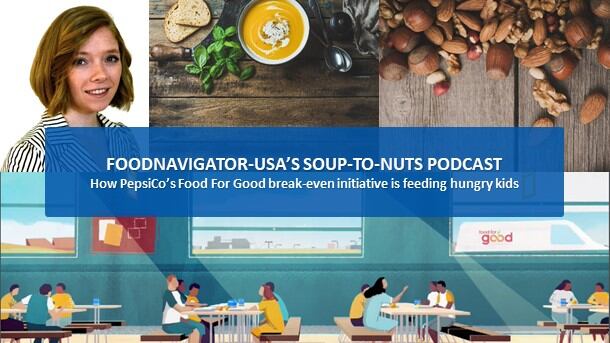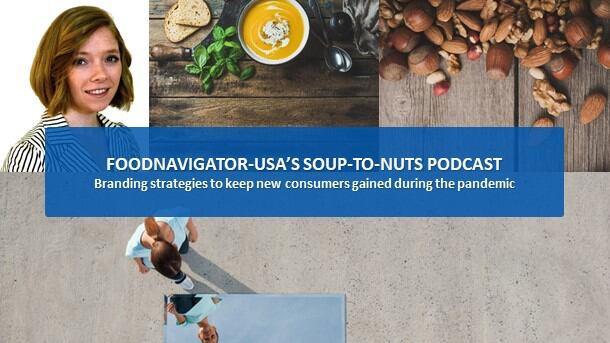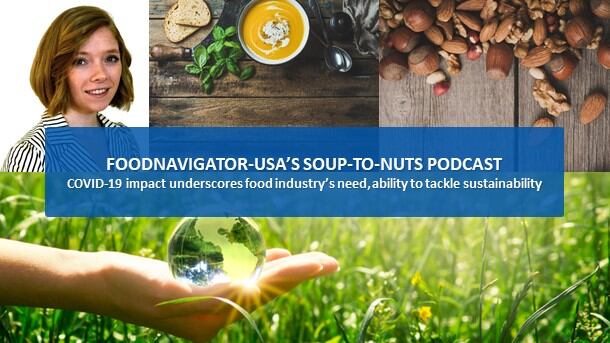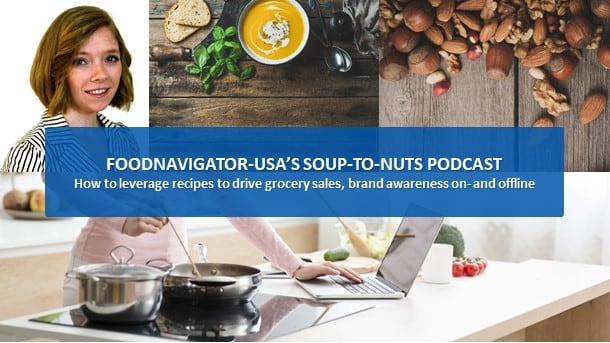And in the eight months since the pandemic was declared, PepsiCo’s purpose-driven initiative hasn’t slowed down – providing more than 30 million nutritious meals to communities in need, working with No Kid Hungry to give emergency grants to schools and community organizations to feed children nationwide, partnering with Baylor Collaborative on Hunger and Poverty and USDA to ship shelf stable meals directly to rural students’ homes and donating $3 million to Team Rubicon’s food delivery operations for Feeding America, Meals on Wheels and others.
While PepsiCo was far from the only industry player and stakeholder to help feed students whose in-person classes were placed on hold, it brings a unique set of strengths to tackle the challenges posed by the pandemic, which senior manager for PepsiCo’s Food for Good program Doug Hargis outlines in this week’s episode of FoodNavigator-USA’s Soup-To-Nuts podcast. In sharing Food For Good’s approach to feeding hungry children, Hargis offers a blueprint for other industry players, government entities and non-government agencies to come together through private-public partnerships to do more good together than alone.
[Editor’s Note: Never miss another episode of FoodNavigator-USA’s Soup-To-Nuts podcast – subscribe today.]
The pandemic’s impact
According to the US Department of Agriculture, before the pandemic was declared, food insecurity in America was slowly but steadily declining from a high of 14.9% in 2011 to 10.5% in 2019 – a statistically significant drop that still left 13.7 million Americans wondering where their next meal would come from and if it would be enough to fill them.
But when the pandemic was declared and safety measured designed to slow the spread of the coronavirus triggered massive layoffs and shutdowns, this downward trend was quickly – and dramatically – reversed, with Feeding America estimating more than 50 million people experiencing food insecurity in 2020.
This increase has cut across all states and people of all ages and race, but as Hargis notes, children have been hit exponentially harder in part because of constraints on schools’ meal production and distribution capacity.
“There is a great number of people out there now that are facing financial hardships as a result of the pandemic, and that could be from lost wages, lost jobs, other sources of income that are no longer there. … But I would say that students have been impacted exponentially by the fact of merely being displaced by COVID,” and no longer to access free and reduced meals during the school day, Hargis said.
While many schools came up with innovative ways of delivering or providing free meals to children in need, many also struggled to meet capacity by sourcing sufficient food and preparing it in a timely fashion.
And that is where PepsiCo’s Food For Good was able to step in and help schools source food and make or pack two, three or even five times as many meals in a day during the pandemic as they did before COVID-19 hit.
Hargis explains that in the early days of the pandemic when food shortages were prevalent due to broken or misdirected supply chains, Food For Good was able to tap into the network of suppliers which it created over the last 11 years to ensure that schools and other organizations feeding children had the provisions they needed.
“We at Food For Good have this vast resource network of suppliers and partners and were able to produce food that would either be a full meal similar to what a child received at school or followed the same USDA guidelines as far as nutritional allowances and requirements. And we can actually help provide those meals to schools,” he explained.
When possible, Food For Good helped provide fresh meals, such as sandwiches on whole wheat bread with baby carrots, an apple and milk. But for some students, such as those living in rural areas or without access to transportation, coming to school to pick up a fresh meal wasn’t feasible.
To ensure children at home still had a meal, Food For Good partnered with USDA to create shelf stable meals including jerky, vegetable chips, juice and other products that met the nutrition standards, that were then shipped directly to students’ homes.
Even though fresh food was all the rage before the pandemic, Hargis said that children love PepsiCo’s shelf stable meals, which were in the works before in-person classes were cancelled as a way to add variety to school meals.
A call to action
Based on PepsiCo’s experience teaming with USDA and Baylor Collaborative on Hunger and Poverty to create and ship meals directly to homes of rural students in need during the pandemic, Hargis urges other industry players, nonprofits and government entities to work together to find innovative solutions for feeding those in need.
“This is not something that’s going to go away quickly. So, what we need to do is be innovative. … There needs to be more positive collaboration between government, private and nonprofit sectors. When you team up like that and really put all those experts together in one group, we prove there’s nothing that can’t be accomplished,” he said.
Hargis also encouraged food and beverage companies to look for ways to hire those who have been displaced by the pandemic to help meet the increased need for food consumed at home.
“With Food For Good, we almost doubled our frontline staff through the pandemic because we had to ramp up to help partners. So, we specifically worked with local restaurant groups to help employ those who may have been displaced from their jobs by the pandemic,” Hargis said.
Ultimately, he added, it is about evaluating all available resources to provide the most good.
While Food For Good, like many others, is currently focused on feeding school children impacted by the pandemic, the initiative’s reach expands much farther and its origin came long before the arrival of the novel coronavirus.
Food for Good launched more than 10 years ago in 2009 by a small group of PepsiCo employees who saw an opportunity to leverage the CPG’s logistical knowledge and widespread connections to feed children in need. It continues today under PepsiCo’s Winning with Purpose vision and support’s the company’s 2025 Sustainability Agenda to provide at least 3 billion servings of nutritious food and beverages to underserved communities.




